Diesel-powered trucks have really evolved over the last 20 years, from chugging workhorses to action-packed powerhouses. In the mid-'90s, a brand-new diesel rig might have given you a little more than 150 hp—if you were lucky.
Eventually, automakers realized truck owners didn't like having to slow down to 35 mph to drag a trailer up steep grades, so they increased performance again and again, to a point where 400 hp is a standard for today's diesel trucks.
While making big steam can be a challenge for a few older trucks (primarily the naturally aspirated ones), 1989 to 1993 5.9L Cummins turbodiesels only need a few select and relatively inexpensive modifications—such as upgrading their VE injection pumps—to bring power output closer to that of the bigger engines found in new trucks.
We recently caught up with Craig Johnson of Big Power Diesel in Palmdale, California, and followed along as he performed a few of these budget-minded upgrades (and some basic repairs) on a '92 Dodge. With the modifications, Craig hopes to improve the truck's quarter-mile e.t. and get it to run in the same low 16-, high 15-
second range as the newer trucks.
Read on through the following photos and captions, which detail highlights of this low-dollar effort.
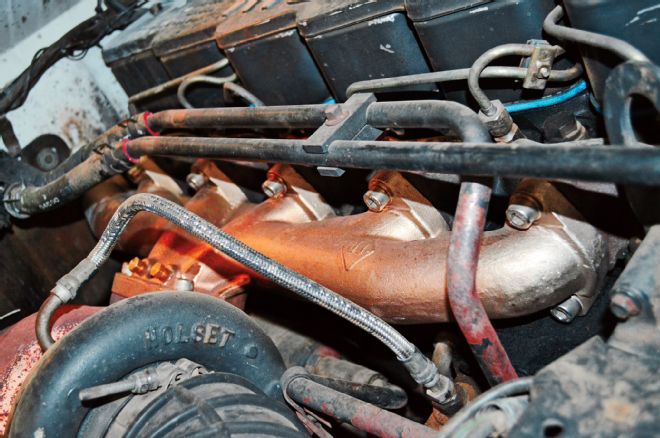
| 1992 Dodge Truck Exhaust And Fuel Tech 02
The 5.9L Cummins in our 1992 Dodge test truck was stone stock, save for one modification. The factory exhaust manifold had warped and cracked, breaking a couple of bolts with it. Luckily, Craig Johnson found a solution in the form of a BD Diesel Performance stainless-steel exhaust manifold, which can withstand up to 2,000 degrees without cracking and will probably last longer than the truck. Since the truck also puffed white smoke, the stock injectors were rebuilt by Omega Fuel Injection before any testing occurred.
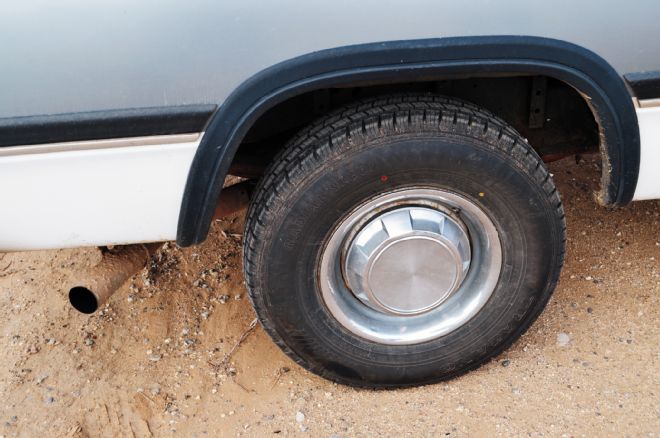
| 1992 Dodge Truck Exhaust And Fuel Tech 03
One of the more costly but necessary upgrades was replacing the rusted, restrictive factory exhaust, which was barely large enough to confirm the '92 Dodge was a diesel.
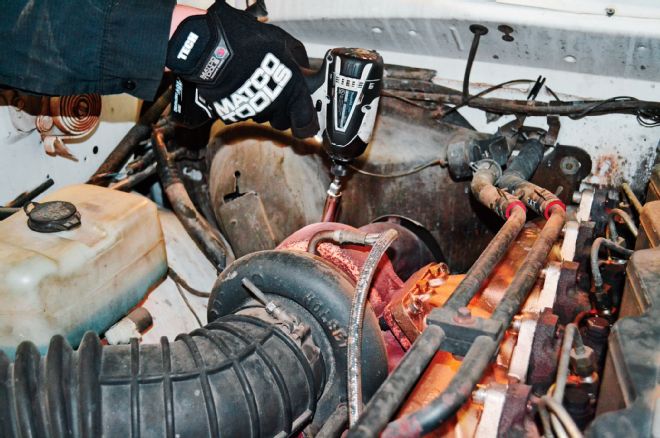
| 1992 Dodge Truck Exhaust And Fuel Tech 04
Our first step of the exhaust install involved tech Chris Mosshart removing the factory downpipe from the turbocharger. Then the truck went up on the lift.
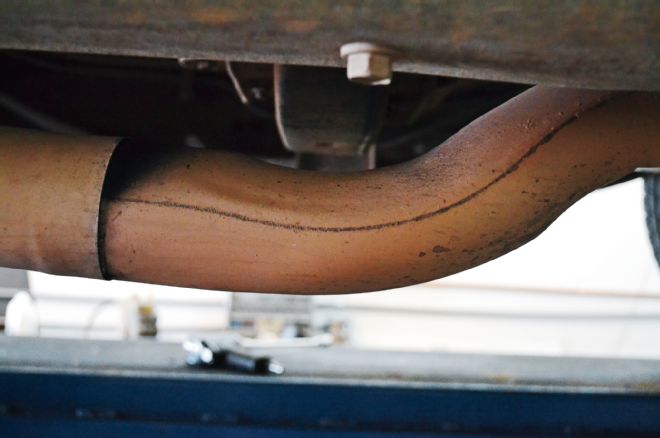
| 1992 Dodge Truck Exhaust And Fuel Tech 05
Although the factory exhaust is a 3-inch setup, many bends reduce the overall diameter in spots to about 2.5 inches; not an optimal size for a turbodiesel engine.
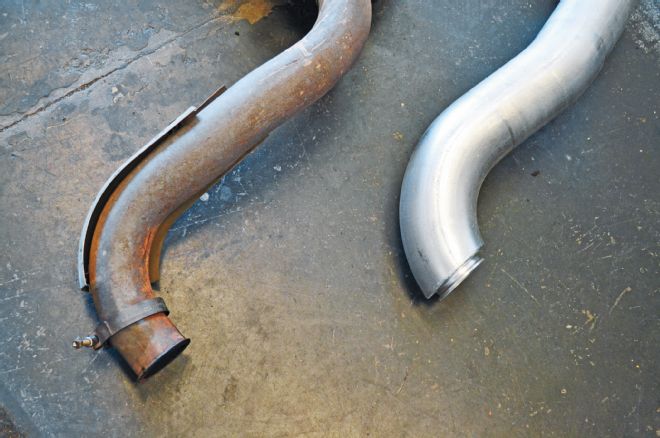
| 1992 Dodge Truck Exhaust And Fuel Tech 06
Next, Chris cut and removed the factory downpipe. Placed here next to a Diamond Eye exhaust kit from Source Automotive, one can see how the 4-inch downpipe will allow for much more exhaust flow once the engine is turned up.
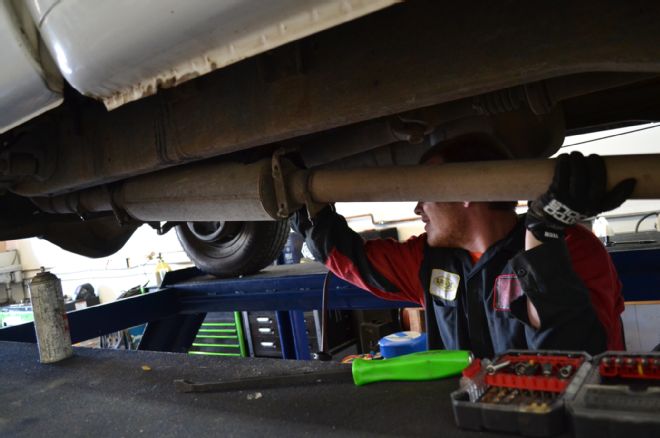
| 1992 Dodge Truck Exhaust And Fuel Tech 07
With the downpipe out, Chris went about removing the rest of the exhaust system, starting with the muffler.
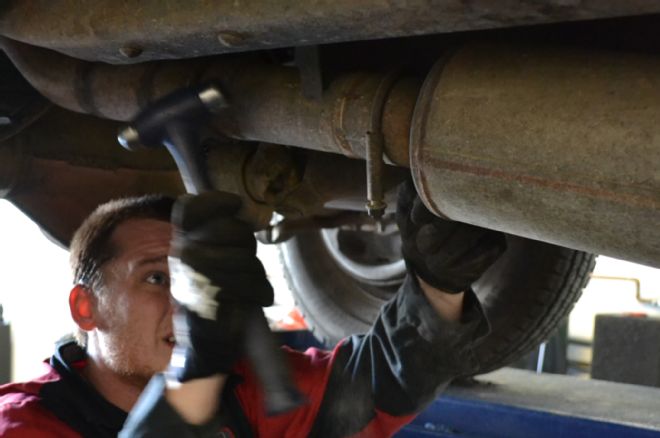
| 1992 Dodge Truck Exhaust And Fuel Tech 08
And, of course, the factory exhaust wouldn't budge. For this type of work, it's always good to have lots of penetrating lubricant, and a 5-pound hammer.
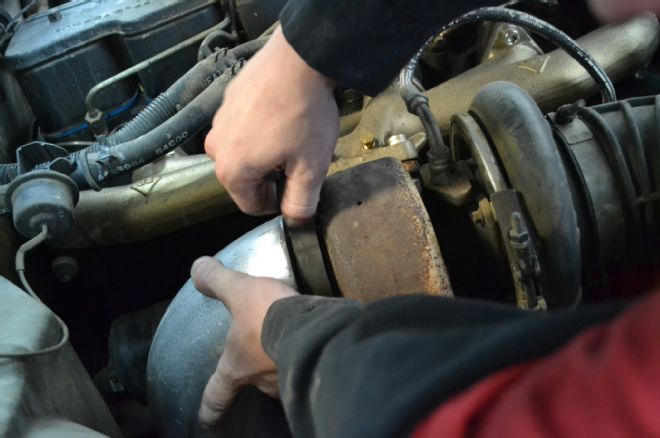
| 1992 Dodge Truck Exhaust And Fuel Tech 09
The Diamond Eye exhaust went on smoothly, starting with the 4-inch downpipe, which easily cleared the firewall.
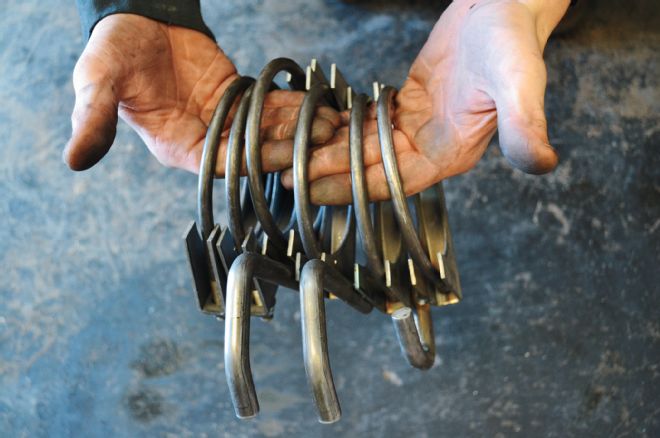
| 1992 Dodge Truck Exhaust And Fuel Tech 10
The kit includes enough exhaust hangars and clamps to support a totally bolt-in installation. However, we added tack welds once everything was positioned, as extra assurance that the exhaust stays in place.
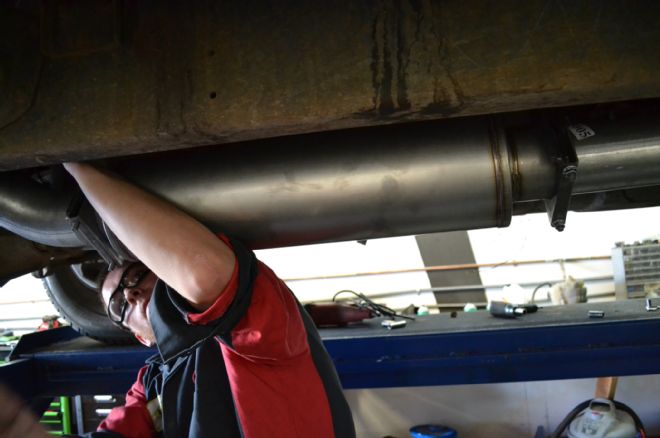
| 1992 Dodge Truck Exhaust And Fuel Tech 11
The over-the-axle section of the exhaust requires the most positioning and adjusting.
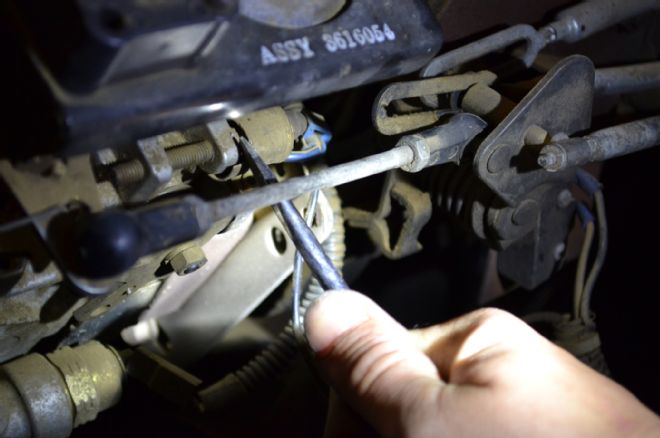
| 1992 Dodge Truck Exhaust And Fuel Tech 12
Cummins engines in 1989 to 1993 Dodges were governed by the factory with a 2,700-rpm rev limit. Since we're stepping up our truck's overall performance, we decided to increase the rpm limit by adjusting the high-idle screw (arrow). The tamper-proof collar was removed, and the screw was backed all the way off to ensure full throttle travel.
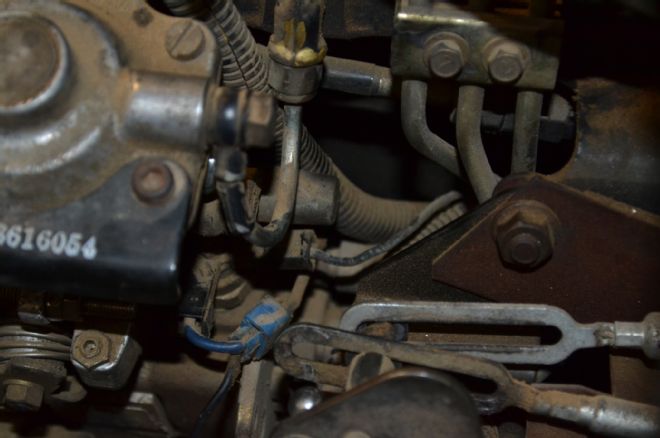
| 1992 Dodge Truck Exhaust And Fuel Tech 13
To increase the pump's fueling, a second tamper-proof cover was removed (arrow) and the injection pump's fuel screw was backed all the way out.
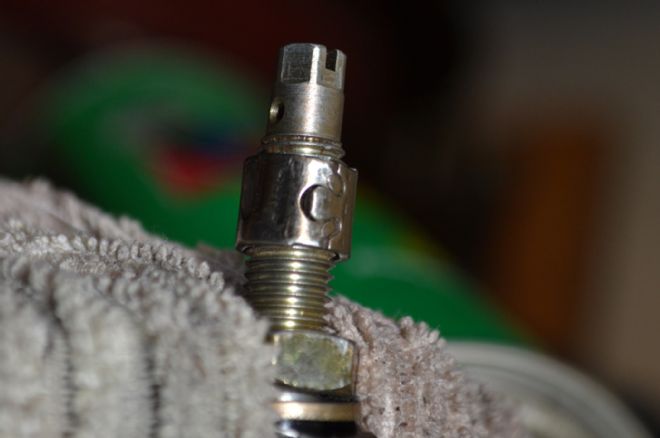
| 1992 Dodge Truck Exhaust And Fuel Tech 14
With the fuel screw in a vice, you can see the tamper-proof collar designed to keep over-eager mechanics or enthusiasts from turning the pump up too far. Since the collar limited the fuel screw's travel inward to about 1 turn more than stock, we removed it.
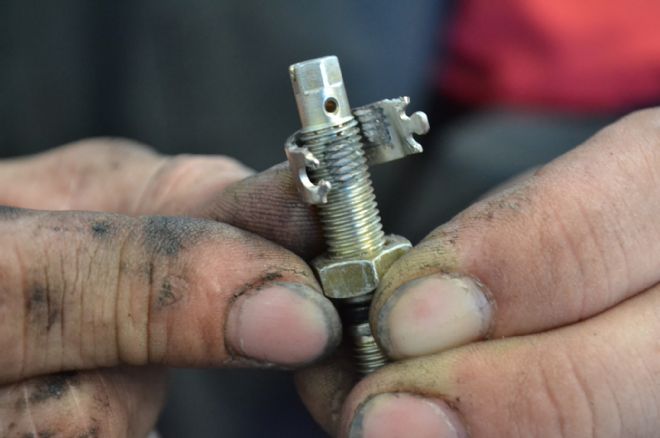
| 1992 Dodge Truck Exhaust And Fuel Tech 15
When removing the factory collar, be careful not to bend or break the fuel screw, or damage the threads too much. The collar is tacked on, so a bit of patience is required when taking it off.
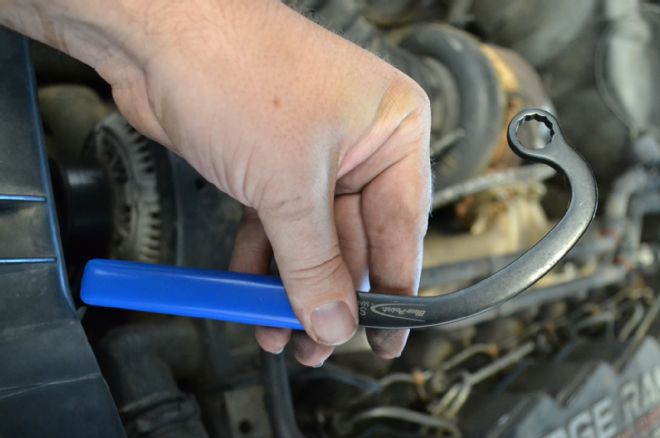
| 1992 Dodge Truck Exhaust And Fuel Tech 16
After adjusting the fuel screw, the injection pump was advanced toward the head to increase timing. To gain access to the bottom injection pump bolt, this handy tool was needed, which can be purchased from most injection shops or tool suppliers.
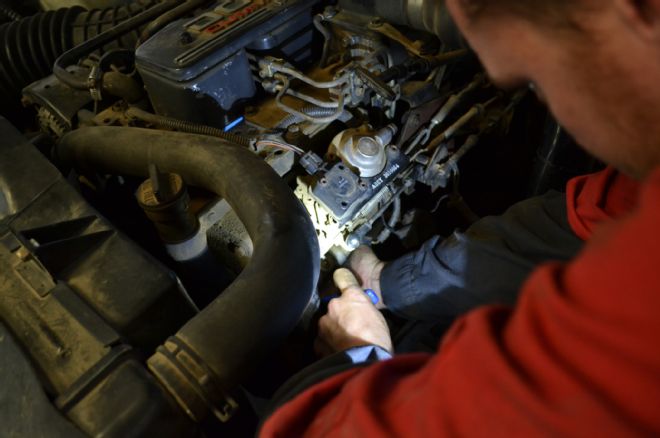
| 1992 Dodge Truck Exhaust And Fuel Tech 17
After the three bolts securing the injection pump to the front cover were loosened (plus one holding a bracket in the back), the pump was rotated about halfway to the head, which is about 3 to 4 degrees advanced from stock. A lot of elbow grease is required for this part, and it helps if the injection lines are loosened.
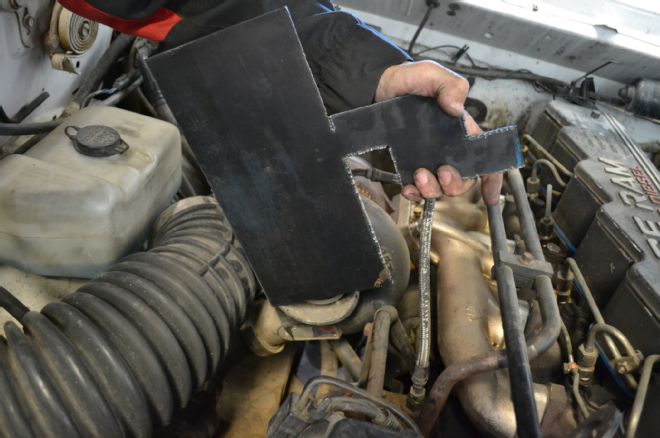
| 1992 Dodge Truck Exhaust And Fuel Tech 18
Whenever the fuel screw is adjusted, it's always a good idea to have a block-off for the turbocharger in case of a runaway situation. The more the screw is adjusted in, the more the engine will "hang" when being revved up. Eventually, if the screw is adjusted too far, the engine will take off and rev up to about 5,000 rpm, which isn't good. The best way to stop this type of situation is to block off the engine's intake air, which we did with a large, flat piece of metal. Items such as a phone book or your hand should not be used, as they can get sucked into the turbocharger. We found that rpm hangs at 3,000 when the screw is adjusted with approximately three turns. Backing it off by a half turn proved to be the perfect adjustment.
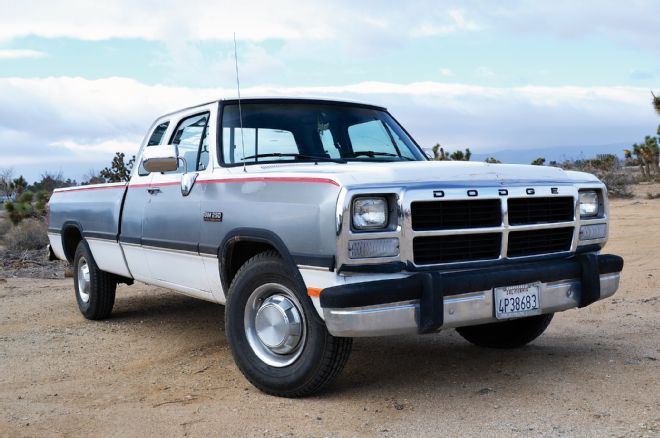
| 1992 Dodge Truck Exhaust And Fuel Tech Front View
Performance Testing
Naturally, our intentions were to see exactly what type of effect—good or bad—our modifications would have on the old truck. However, as there is no dyno at Big Power Diesel, we were forced to take the old-school route for measuring performance: running the Dodge down the quarter-mile.
In factory-stock trim, the truck ran a Prius-like 19.1 seconds at 70.5 mph, which is on par with the dragstrip time it ran when it was new. Fuel mileage came in at 20.8 mpg, and the truck's weight was 5,760 pounds with driver. Once turned up, the rig experienced traction problems in First gear but still managed a much better 17.3-second at 76.5 mph.
While we didn't achieve the 16s we were hoping for, we still feel the gains are pretty impressive, considering the modifications. It's also important to note that the truck was still running smoke-free at full throttle, mileage was up slightly at 21.7 mpg, and we were able to reach 3,000 rpm instead of 2,700, confirming our throttle-linkage trick was also effective.
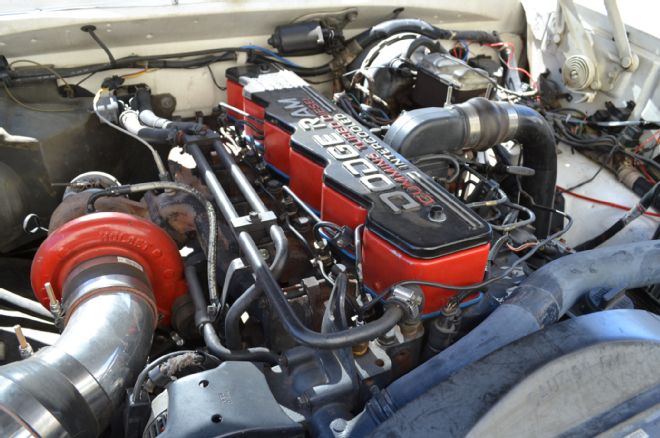
| 1992 Dodge Truck Exhaust And Fuel Tech 20
Want More?
While at Big Power Diesel, we ran into Isaac Hernandez, who had taken the next step in modifying his VE-pumped Dodge for more performance. Isaac rebuilt an HX35 that he purchased for $50 and also added 100hp injectors, a 3,200-rpm governor spring, and a fuel pin, which are the next logical modifications for these '89 to '93 trucks. Depending on pump tuning, injector size, and timing, expect about 300 to 350 rwhp with these extra modifications.
 | 1992 Dodge Truck Exhaust And Fuel Tech 02
The 5.9L Cummins in our 1992 Dodge test truck was stone stock, save for one modification. The factory exhaust manifold had warped and cracked, breaking a couple of bolts with it. Luckily, Craig Johnson found a solution in the form of a BD Diesel Performance stainless-steel exhaust manifold, which can withstand up to 2,000 degrees without cracking and will probably last longer than the truck. Since the truck also puffed white smoke, the stock injectors were rebuilt by Omega Fuel Injection before any testing occurred.
| 1992 Dodge Truck Exhaust And Fuel Tech 02
The 5.9L Cummins in our 1992 Dodge test truck was stone stock, save for one modification. The factory exhaust manifold had warped and cracked, breaking a couple of bolts with it. Luckily, Craig Johnson found a solution in the form of a BD Diesel Performance stainless-steel exhaust manifold, which can withstand up to 2,000 degrees without cracking and will probably last longer than the truck. Since the truck also puffed white smoke, the stock injectors were rebuilt by Omega Fuel Injection before any testing occurred.
 | 1992 Dodge Truck Exhaust And Fuel Tech 03
One of the more costly but necessary upgrades was replacing the rusted, restrictive factory exhaust, which was barely large enough to confirm the '92 Dodge was a diesel.
| 1992 Dodge Truck Exhaust And Fuel Tech 03
One of the more costly but necessary upgrades was replacing the rusted, restrictive factory exhaust, which was barely large enough to confirm the '92 Dodge was a diesel.
 | 1992 Dodge Truck Exhaust And Fuel Tech 04
Our first step of the exhaust install involved tech Chris Mosshart removing the factory downpipe from the turbocharger. Then the truck went up on the lift.
| 1992 Dodge Truck Exhaust And Fuel Tech 04
Our first step of the exhaust install involved tech Chris Mosshart removing the factory downpipe from the turbocharger. Then the truck went up on the lift.
 | 1992 Dodge Truck Exhaust And Fuel Tech 05
Although the factory exhaust is a 3-inch setup, many bends reduce the overall diameter in spots to about 2.5 inches; not an optimal size for a turbodiesel engine.
| 1992 Dodge Truck Exhaust And Fuel Tech 05
Although the factory exhaust is a 3-inch setup, many bends reduce the overall diameter in spots to about 2.5 inches; not an optimal size for a turbodiesel engine.
 | 1992 Dodge Truck Exhaust And Fuel Tech 06
Next, Chris cut and removed the factory downpipe. Placed here next to a Diamond Eye exhaust kit from Source Automotive, one can see how the 4-inch downpipe will allow for much more exhaust flow once the engine is turned up.
| 1992 Dodge Truck Exhaust And Fuel Tech 06
Next, Chris cut and removed the factory downpipe. Placed here next to a Diamond Eye exhaust kit from Source Automotive, one can see how the 4-inch downpipe will allow for much more exhaust flow once the engine is turned up.
 | 1992 Dodge Truck Exhaust And Fuel Tech 07
With the downpipe out, Chris went about removing the rest of the exhaust system, starting with the muffler.
| 1992 Dodge Truck Exhaust And Fuel Tech 07
With the downpipe out, Chris went about removing the rest of the exhaust system, starting with the muffler.
 | 1992 Dodge Truck Exhaust And Fuel Tech 08
And, of course, the factory exhaust wouldn't budge. For this type of work, it's always good to have lots of penetrating lubricant, and a 5-pound hammer.
| 1992 Dodge Truck Exhaust And Fuel Tech 08
And, of course, the factory exhaust wouldn't budge. For this type of work, it's always good to have lots of penetrating lubricant, and a 5-pound hammer.
 | 1992 Dodge Truck Exhaust And Fuel Tech 09
The Diamond Eye exhaust went on smoothly, starting with the 4-inch downpipe, which easily cleared the firewall.
| 1992 Dodge Truck Exhaust And Fuel Tech 09
The Diamond Eye exhaust went on smoothly, starting with the 4-inch downpipe, which easily cleared the firewall.
 | 1992 Dodge Truck Exhaust And Fuel Tech 10
The kit includes enough exhaust hangars and clamps to support a totally bolt-in installation. However, we added tack welds once everything was positioned, as extra assurance that the exhaust stays in place.
| 1992 Dodge Truck Exhaust And Fuel Tech 10
The kit includes enough exhaust hangars and clamps to support a totally bolt-in installation. However, we added tack welds once everything was positioned, as extra assurance that the exhaust stays in place.
 | 1992 Dodge Truck Exhaust And Fuel Tech 11
The over-the-axle section of the exhaust requires the most positioning and adjusting.
| 1992 Dodge Truck Exhaust And Fuel Tech 11
The over-the-axle section of the exhaust requires the most positioning and adjusting.
 | 1992 Dodge Truck Exhaust And Fuel Tech 12
Cummins engines in 1989 to 1993 Dodges were governed by the factory with a 2,700-rpm rev limit. Since we're stepping up our truck's overall performance, we decided to increase the rpm limit by adjusting the high-idle screw (arrow). The tamper-proof collar was removed, and the screw was backed all the way off to ensure full throttle travel.
| 1992 Dodge Truck Exhaust And Fuel Tech 12
Cummins engines in 1989 to 1993 Dodges were governed by the factory with a 2,700-rpm rev limit. Since we're stepping up our truck's overall performance, we decided to increase the rpm limit by adjusting the high-idle screw (arrow). The tamper-proof collar was removed, and the screw was backed all the way off to ensure full throttle travel.
 | 1992 Dodge Truck Exhaust And Fuel Tech 13
To increase the pump's fueling, a second tamper-proof cover was removed (arrow) and the injection pump's fuel screw was backed all the way out.
| 1992 Dodge Truck Exhaust And Fuel Tech 13
To increase the pump's fueling, a second tamper-proof cover was removed (arrow) and the injection pump's fuel screw was backed all the way out.
 | 1992 Dodge Truck Exhaust And Fuel Tech 14
With the fuel screw in a vice, you can see the tamper-proof collar designed to keep over-eager mechanics or enthusiasts from turning the pump up too far. Since the collar limited the fuel screw's travel inward to about 1 turn more than stock, we removed it.
| 1992 Dodge Truck Exhaust And Fuel Tech 14
With the fuel screw in a vice, you can see the tamper-proof collar designed to keep over-eager mechanics or enthusiasts from turning the pump up too far. Since the collar limited the fuel screw's travel inward to about 1 turn more than stock, we removed it.
 | 1992 Dodge Truck Exhaust And Fuel Tech 15
When removing the factory collar, be careful not to bend or break the fuel screw, or damage the threads too much. The collar is tacked on, so a bit of patience is required when taking it off.
| 1992 Dodge Truck Exhaust And Fuel Tech 15
When removing the factory collar, be careful not to bend or break the fuel screw, or damage the threads too much. The collar is tacked on, so a bit of patience is required when taking it off.
 | 1992 Dodge Truck Exhaust And Fuel Tech 16
After adjusting the fuel screw, the injection pump was advanced toward the head to increase timing. To gain access to the bottom injection pump bolt, this handy tool was needed, which can be purchased from most injection shops or tool suppliers.
| 1992 Dodge Truck Exhaust And Fuel Tech 16
After adjusting the fuel screw, the injection pump was advanced toward the head to increase timing. To gain access to the bottom injection pump bolt, this handy tool was needed, which can be purchased from most injection shops or tool suppliers.
 | 1992 Dodge Truck Exhaust And Fuel Tech 17
After the three bolts securing the injection pump to the front cover were loosened (plus one holding a bracket in the back), the pump was rotated about halfway to the head, which is about 3 to 4 degrees advanced from stock. A lot of elbow grease is required for this part, and it helps if the injection lines are loosened.
| 1992 Dodge Truck Exhaust And Fuel Tech 17
After the three bolts securing the injection pump to the front cover were loosened (plus one holding a bracket in the back), the pump was rotated about halfway to the head, which is about 3 to 4 degrees advanced from stock. A lot of elbow grease is required for this part, and it helps if the injection lines are loosened.
 | 1992 Dodge Truck Exhaust And Fuel Tech 18
Whenever the fuel screw is adjusted, it's always a good idea to have a block-off for the turbocharger in case of a runaway situation. The more the screw is adjusted in, the more the engine will "hang" when being revved up. Eventually, if the screw is adjusted too far, the engine will take off and rev up to about 5,000 rpm, which isn't good. The best way to stop this type of situation is to block off the engine's intake air, which we did with a large, flat piece of metal. Items such as a phone book or your hand should not be used, as they can get sucked into the turbocharger. We found that rpm hangs at 3,000 when the screw is adjusted with approximately three turns. Backing it off by a half turn proved to be the perfect adjustment.
| 1992 Dodge Truck Exhaust And Fuel Tech 18
Whenever the fuel screw is adjusted, it's always a good idea to have a block-off for the turbocharger in case of a runaway situation. The more the screw is adjusted in, the more the engine will "hang" when being revved up. Eventually, if the screw is adjusted too far, the engine will take off and rev up to about 5,000 rpm, which isn't good. The best way to stop this type of situation is to block off the engine's intake air, which we did with a large, flat piece of metal. Items such as a phone book or your hand should not be used, as they can get sucked into the turbocharger. We found that rpm hangs at 3,000 when the screw is adjusted with approximately three turns. Backing it off by a half turn proved to be the perfect adjustment.
 | 1992 Dodge Truck Exhaust And Fuel Tech Front View
Performance Testing
Naturally, our intentions were to see exactly what type of effect—good or bad—our modifications would have on the old truck. However, as there is no dyno at Big Power Diesel, we were forced to take the old-school route for measuring performance: running the Dodge down the quarter-mile.
In factory-stock trim, the truck ran a Prius-like 19.1 seconds at 70.5 mph, which is on par with the dragstrip time it ran when it was new. Fuel mileage came in at 20.8 mpg, and the truck's weight was 5,760 pounds with driver. Once turned up, the rig experienced traction problems in First gear but still managed a much better 17.3-second at 76.5 mph.
While we didn't achieve the 16s we were hoping for, we still feel the gains are pretty impressive, considering the modifications. It's also important to note that the truck was still running smoke-free at full throttle, mileage was up slightly at 21.7 mpg, and we were able to reach 3,000 rpm instead of 2,700, confirming our throttle-linkage trick was also effective.
| 1992 Dodge Truck Exhaust And Fuel Tech Front View
Performance Testing
Naturally, our intentions were to see exactly what type of effect—good or bad—our modifications would have on the old truck. However, as there is no dyno at Big Power Diesel, we were forced to take the old-school route for measuring performance: running the Dodge down the quarter-mile.
In factory-stock trim, the truck ran a Prius-like 19.1 seconds at 70.5 mph, which is on par with the dragstrip time it ran when it was new. Fuel mileage came in at 20.8 mpg, and the truck's weight was 5,760 pounds with driver. Once turned up, the rig experienced traction problems in First gear but still managed a much better 17.3-second at 76.5 mph.
While we didn't achieve the 16s we were hoping for, we still feel the gains are pretty impressive, considering the modifications. It's also important to note that the truck was still running smoke-free at full throttle, mileage was up slightly at 21.7 mpg, and we were able to reach 3,000 rpm instead of 2,700, confirming our throttle-linkage trick was also effective.
 | 1992 Dodge Truck Exhaust And Fuel Tech 20
Want More?
While at Big Power Diesel, we ran into Isaac Hernandez, who had taken the next step in modifying his VE-pumped Dodge for more performance. Isaac rebuilt an HX35 that he purchased for $50 and also added 100hp injectors, a 3,200-rpm governor spring, and a fuel pin, which are the next logical modifications for these '89 to '93 trucks. Depending on pump tuning, injector size, and timing, expect about 300 to 350 rwhp with these extra modifications.
| 1992 Dodge Truck Exhaust And Fuel Tech 20
Want More?
While at Big Power Diesel, we ran into Isaac Hernandez, who had taken the next step in modifying his VE-pumped Dodge for more performance. Isaac rebuilt an HX35 that he purchased for $50 and also added 100hp injectors, a 3,200-rpm governor spring, and a fuel pin, which are the next logical modifications for these '89 to '93 trucks. Depending on pump tuning, injector size, and timing, expect about 300 to 350 rwhp with these extra modifications.